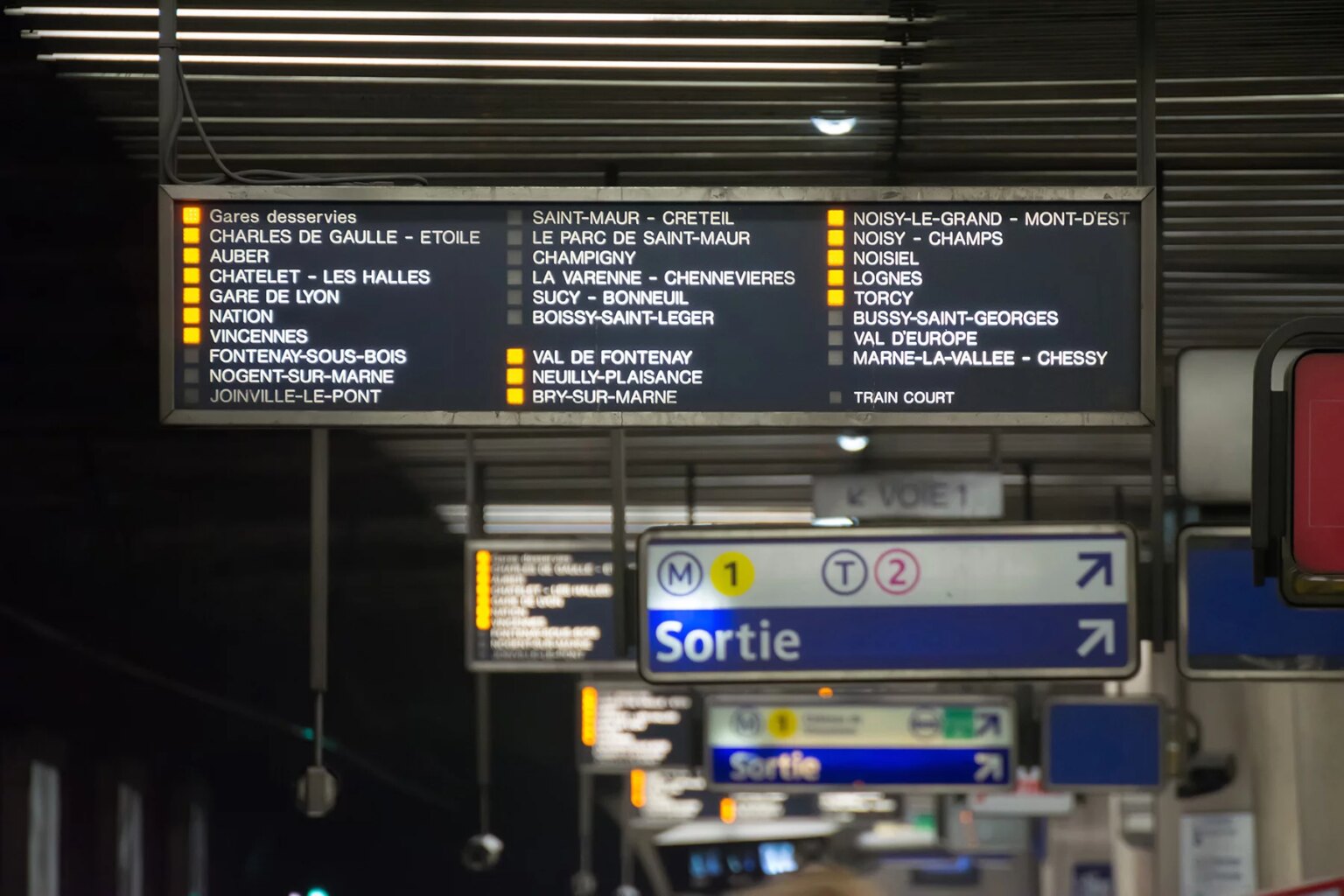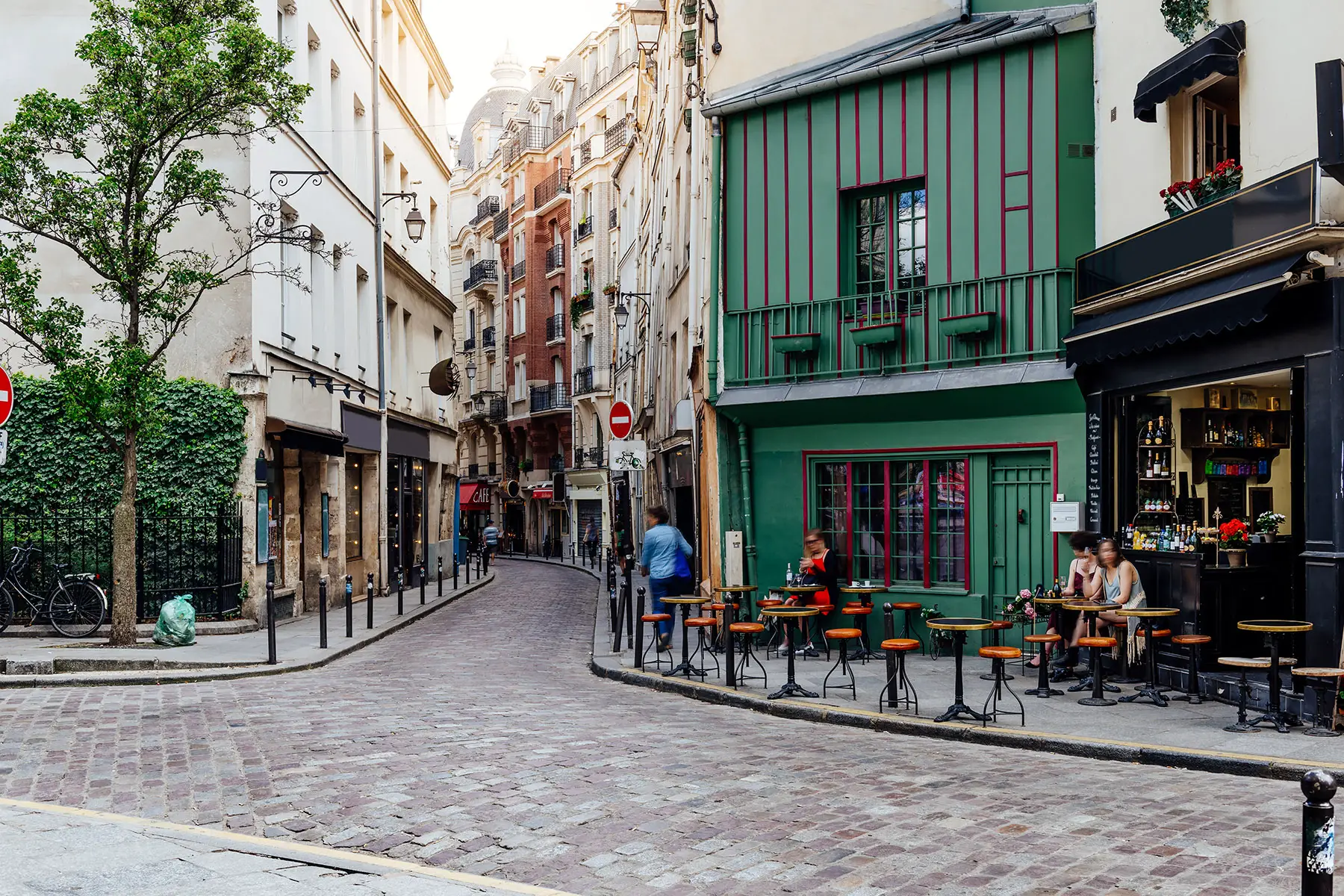Understanding the local public transport system in a new country can be challenging, particularly if you don’t speak the French language. If you’re an expat living in France, it doesn’t matter whether you’re commuting in Cannes or touring around Toulouse, it’s a good idea to know what to expect from French public transport (transport en commun).
To make sure you have everything you need to know, our guide to French public transportation includes the following information:
- The French public transportation network
- French public transportation apps
- Taking the bus in France
- Coach travel in France
- Traveling by metro in France
- Train travel in France
- Traveling by tram in France
- Airports in France
- Taking a French taxi
- How disability-accessible is French public transportation?
- How environmentally friendly is French public transportation?
- Making a public transportation complaint in France
- Useful resources
Omio
Want to fly away from it all? Or maybe you're looking for a family adventure by train? Wherever you're going, Omio can help you find the best deals for your journey. This one-stop shop lets you compare a range of transport modes, explore new destinations, and buy tickets at the touch of a button. Wherever adventure takes you, get there with Omio.
The French public transportation network
France boasts a dense public transport network with high numbers of passengers. In 2021, the French government invested €187.4 million into its transportation industry. In turn, French citizens make frequent use of their public transportation system. The Ministère de la Transition écologique et solidaire (Ministry of Ecological and Solidarity Transition – MTES) oversees public transport as part of general sustainable development policy.
French transportation is generally of a high standard, meaning it’s easy to get around the country by train, bus, metro, and more. Furthermore, it has excellent rail and road links with neighboring countries.
French public transportation apps
You can make your commute a lot simpler by downloading an app and viewing your options from the comfort of your phone. There are several apps to help you navigate French public transportation. For example, Citymapper – a popular public transit app – currently covers eight French cities, including Paris, Lyon, and Marseille. You can use the app to plan your journey, find timetables, and check for disruptions. Omio is another great option for longer journeys – with it, you can compare and book different rail, road, and air fares.
There are also France-specific apps available. For instance, if you’re taking a longer trip by train, Société Nationale des Chemins de Fer Français (SNCF) has you covered. Their app, SNCF Connect (available on iOS and Android), provides integrated maps, live updates, and a journey planner. It’s a great bet if you’re traveling by any kind of train, as it covers the Réseau Express Régional (RER), commuter trains, buses, the Train à grande vitesse (TGV), and Intercity trains. It’s also possible to view bus routes from the app.
For city-specific apps, check out:
- Bonjour RATP – Paris
- RTM – Marseille
- Tisséo – Toulouse
Taking the bus in France
If you use public transportation frequently, you’ll soon discover that the bus is a cornerstone of French everyday life. Whether you’re moving between suburbs in a large city or traveling through rural French villages, you’ll probably find that the bus is your best option. It’s also a great way to explore parts of your new home you otherwise wouldn’t get to see.
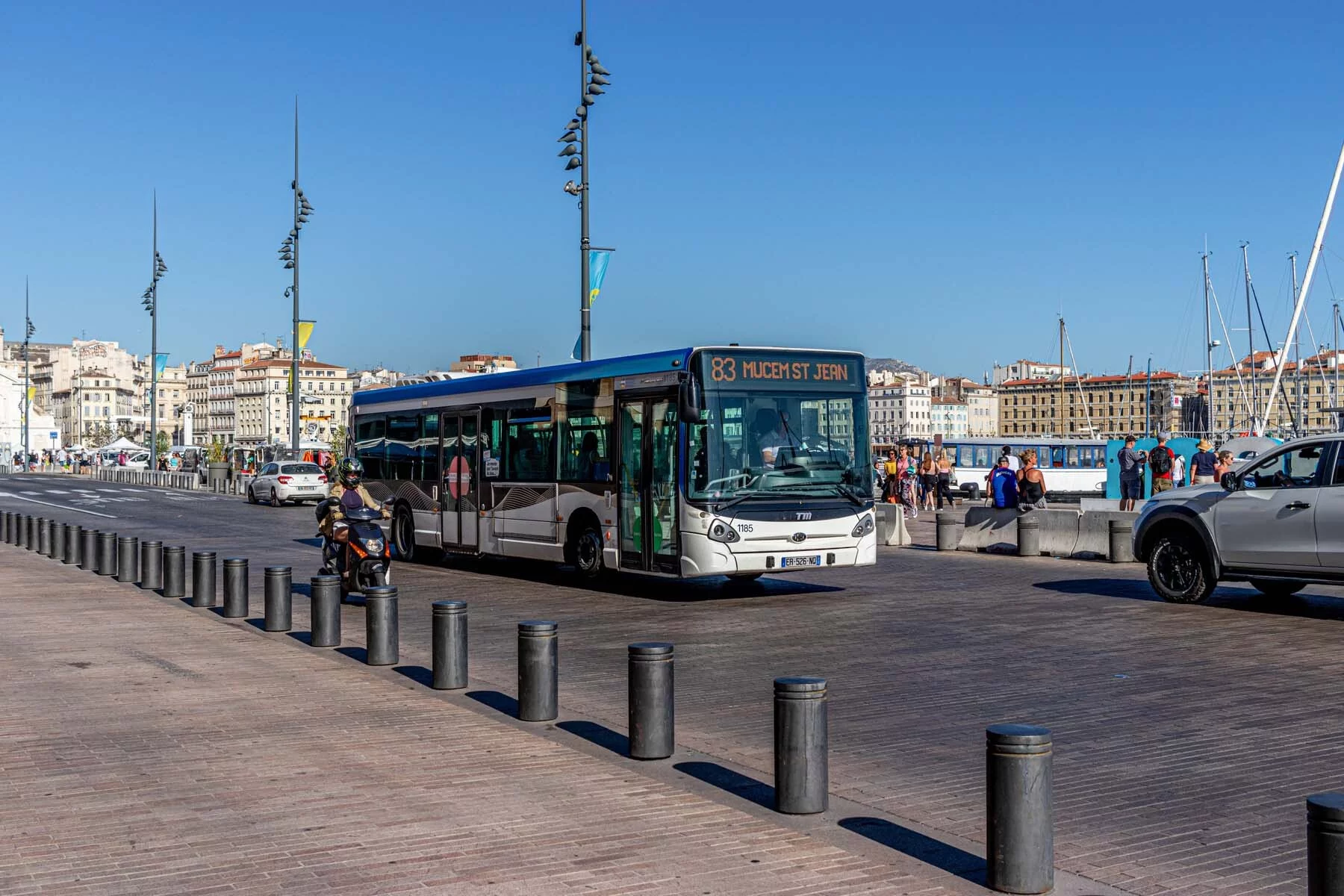
Local buses in France are operated at a local or regional level, either serving large towns and cities or connecting rural villages with regional centers.
Some of the bus operators serving the bigger cities in France are:
- Arles: Envia
- Lyon: TCL
- Marseille: RTM
- Nice: Ligne D’Azur
- Nîmes: TANGO
- Paris: RATP
- Strasbourg: CTS
- Toulouse: Tisséo
Bus tickets and costs in France
You can buy tickets in advance at a machine at the bus stop, a local tobacconist (tabac), or onboard from the driver. Tickets are available both as single or multiple journeys and you must validate them when you enter the bus. If you are caught with an unvalidated ticket, you risk a hefty fine of up to €180.
Prices of bus tickets differ across France, so it is best to check with your local operator to see how much your ticket will be. If you are buying a ticket directly from the bus driver, it is better to try and use the correct change if possible, although most drivers will have change at their disposal.
In Paris, passengers can purchase a Navigo card, a convenient pass that can be used to access transport on buses, metro, tram, and RER. Navigo cards are available for purchase online or at RATP ticket offices. Discounts on Navigo cards are available for senior citizens, students, disabled persons, retired persons, and children under the age of 11.
Bus timetables and maps in France
Buses around France operate by different schedules, depending on the area. While buses generally start early in the morning, they often stop running early in the evening, especially in more rural areas. To make sure you don’t miss the last bus home, check your local bus schedule.
Larger cities like Paris and Lyon operate a night bus service. In Paris, the Noctilien night bus operates seven days a week, with buses running from about 00:30 to 05:30. In Lyon, the Plein Lune night buses can take you home from the city center between Thursday and Sunday, from 01:00 to 04:00.
Coach travel in France
France is one of the largest countries in Europe, and distances between major cities can be surprisingly long. While many locals and visitors choose high-speed trains to get around the country, this may not be possible or affordable for others.
Fortunately, France has undergone something of a long-distance coach revolution following the liberalization of the market in 2015. These days, there are several coach options, operated by BlaBlaCar Bus, Eurolines, and Flixbus.
These inter-city and inter-regional coaches offer a convenient – and much cheaper – alternative to getting around the country. Most cities will have a coach station (gare routière) where you can catch long-distance coaches. Be warned: French coach stations and stops are often located on the edges of towns and cities. Make sure you know where you’re heading beforehand so you don’t miss your bus.
On longer journeys, coaches will take comfort breaks at highway rest stops along the route. Here, you’ll be able to buy refreshments and use the restrooms.
International coach travel is also available from France to destinations throughout Europe. To see what destinations are available in your city, check Flixbus’s destinations catalog.
Traveling by metro in France
One of the most efficient modes of transportation around some French cities lies right under your feet. The following cities all have metro systems connecting outer neighborhoods to the city center:
- Lille
- Lyon
- Marseille
- Paris
- Rennes
- Toulouse
These networks are often the quickest and most efficient way to travel in these cities. Tickets can typically be used across all modes of transport in their respective cities, allowing you to easily move from one point to another.
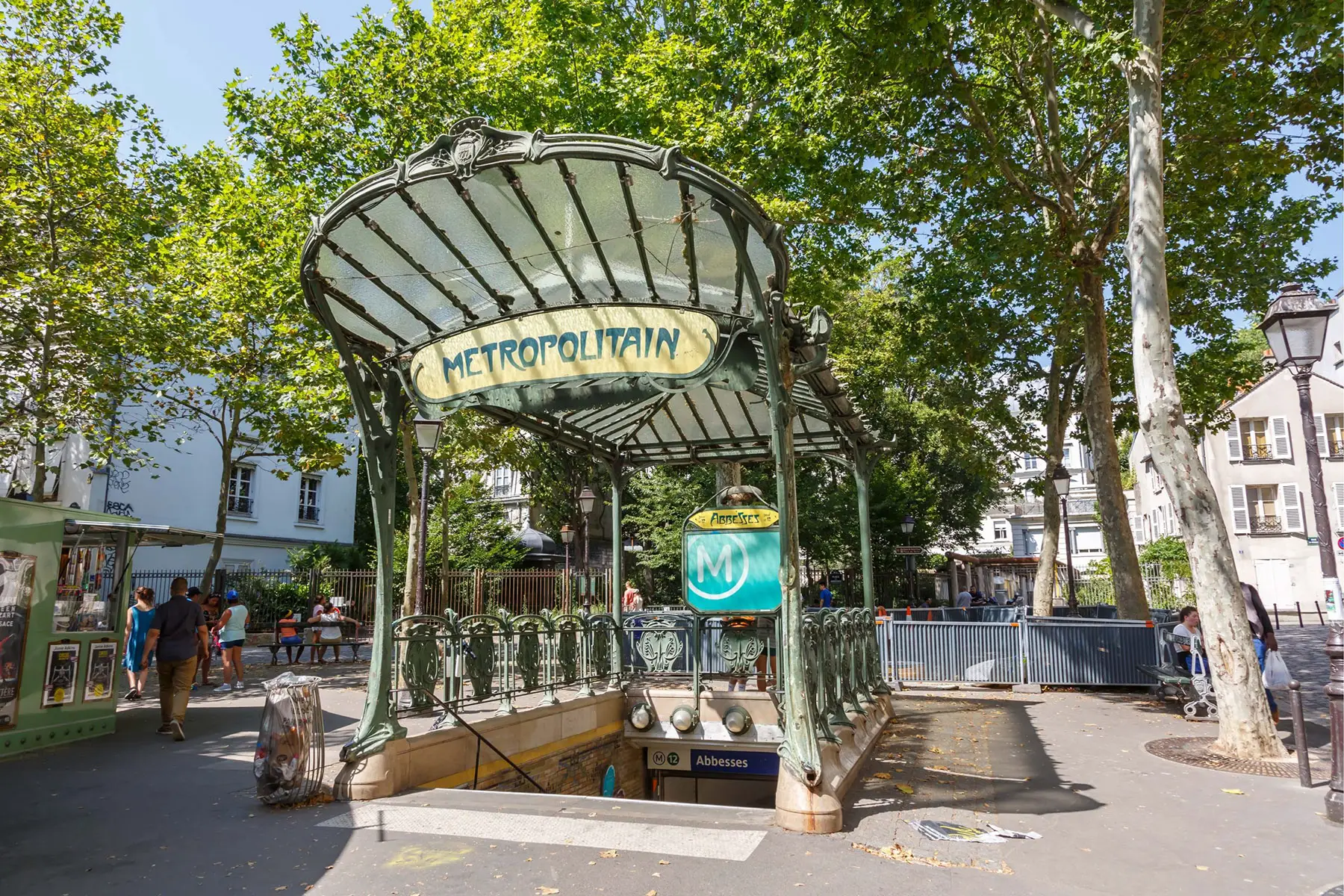
However, the biggest French metro network by a considerable distance is in Paris. The Paris Métro network has around 300 stations and covers the vast majority of neighborhoods in the French capital. The system is operated by RATP, the state-owned transit authority of the Paris region.
Unfortunately, pickpockets can be an issue on the Paris Métro, particularly if you look like a tourist. Keep an eye on your belongings at all times.
Metro tickets and costs in France
Single and multi-journey (un carnet) ticket prices vary depending on which region you are traveling in France. To see how much your ticket costs, check with your metro operator. You can buy your metro tickets from the station or, for certain regions, online.
In Paris, you can use your Navigo card to conveniently board the metro. Single tickets are valid for one journey, including all connections, of up to two hours. Navigo weekly and monthly passes are also available for commuters.
Metro timetables and maps in France
In Paris, the metro runs from 05:30 to 01:15 on weekdays; while on Friday and Saturday night, it runs until about 02:15. In other cities, the metro usually stops at midnight but may run even later than the Paris metro on the weekends.
To find out when your last train will pass, check with your local metro operator.
While it may sometimes operate till the early hours of the morning, French metro systems do not operate throughout the night. You’ll need to catch a local night bus if you want to get home after it closes.
Train travel in France
With spectacular countryside to enjoy right outside your window, train travel in France can be an absolute delight. French trains are operated by the state-owned SNCF.
There are a variety of trains available throughout France. These include:
- TGV: France’s intercity high-speed rail service
- RER: the express commuter train connecting Paris to its suburbs
- Regional trains: local trains operating between towns
- Intercités (Intercity trains): trains running between cities not served by the TGV network
Compared to some other European countries, train travel in France is relatively inexpensive, particularly on non-TGV Intercités routes.
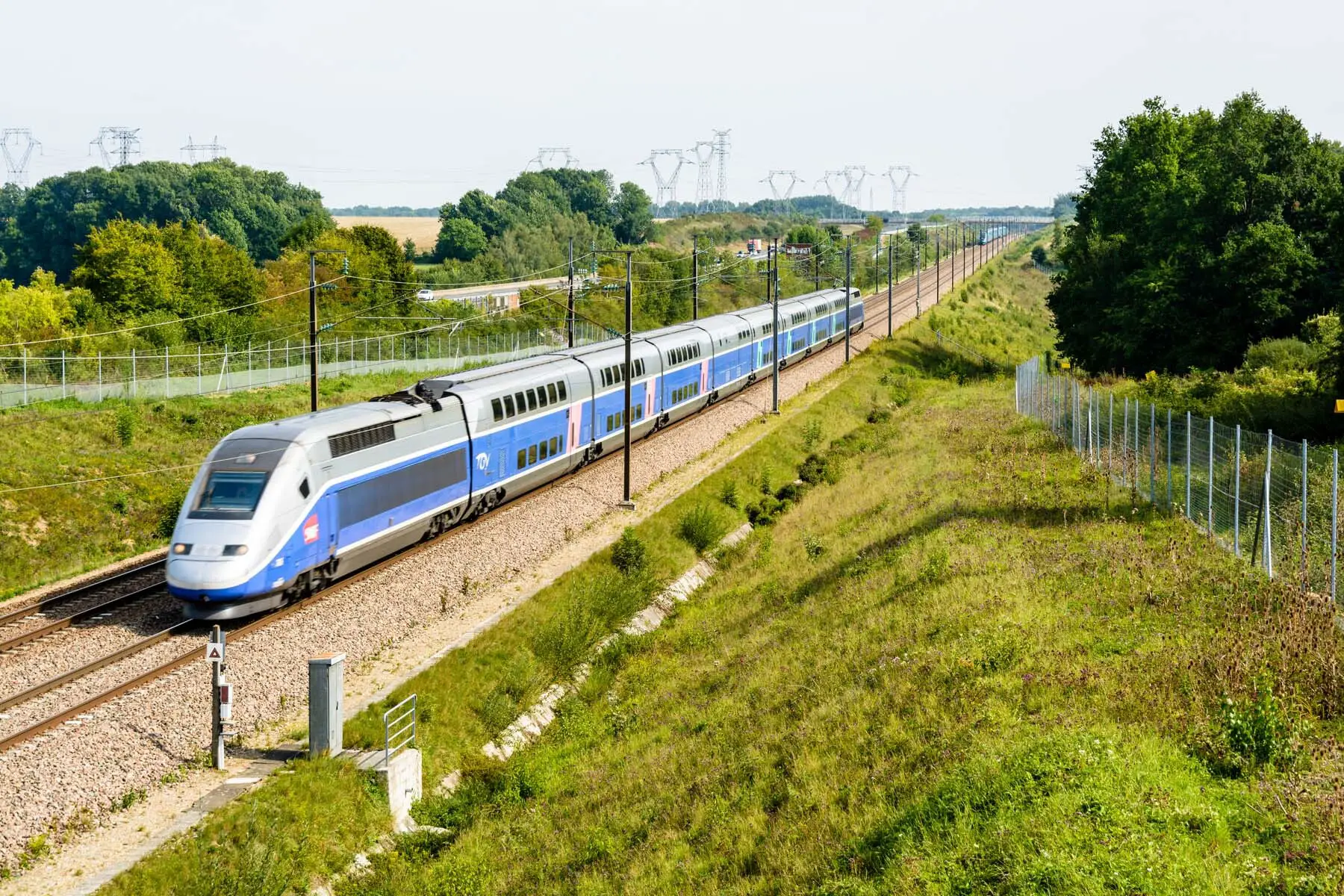
Paris has several terminal stations, each serving a different region of France. Some offer TGV connections, while others have intercity and regional services. Make sure you know from which station your train departs.
Train tickets and costs in France
Given the wide variety of rail services available, train ticket prices can vary considerably.
For regional and RER trains, there is no need to book your journey in advance. Fares are fixed, so there is no need to worry about securing the best deal for your ticket. Ticket fares for RER trains are available on the RATP website. If traveling with a regional train, check with your local operator for prices. You can buy tickets from your train station, either from the ticket office desk or from a self-service ticket machine.
For short-distance Intercités routes, it is not necessary to book your ticket beforehand. You can simply buy your ticket from the station, or online if you prefer. For long-distance Intercités (such as Paris to Toulouse), Intercités Nuit (overnight Intercity trains), and TGV routes, it is compulsory to book your ticket in advance. Prices for these trains vary, so it is best to book in advance if you are looking to save some extra cash in your pocket.
You can buy tickets at the station ticket office, online at the SCNF website, or through other third-party platforms like Omio.
SNCF also offers discount cards (cartes avantage) for regular train passengers. Persons with disabilities can also claim special discounts.
It is important to validate your ticket before boarding your train; otherwise, you risk receiving a fine.
Train timetables and maps in France
Given the sheer size of France’s rail network, it is no surprise that SNCF does not offer a timetable for all its routes. If you want to see when your trail will pass, you can use SNCF’s journey planner.
SNCF also offers a map of the entire French railway, as well as updates on ongoing maintenance on their train lines.
International trains in France
With day and sleeper trains available across France’s borders, there are plenty of international train routes available from France.
On international routes, trains are operated by companies other than SCNF, including Eurostar (for routes to Belgium, the Netherlands, and the United Kingdom). Train ticket fares vary, although booking a ticket in advance and avoiding traveling on the weekend will save you money.
Traveling by tram in France
Are you looking for a way to combine the street-level vistas of buses with the excitement of track-based travel? Then you’ll probably like traveling by tram in France. Despite closing most of its tramways in the mid-20th century, the country made a U-turn a few decades ago and these days leads the world in tram travel. Since 2000, around 20 French cities have re-opened their tram networks, revolutionizing local mobility.
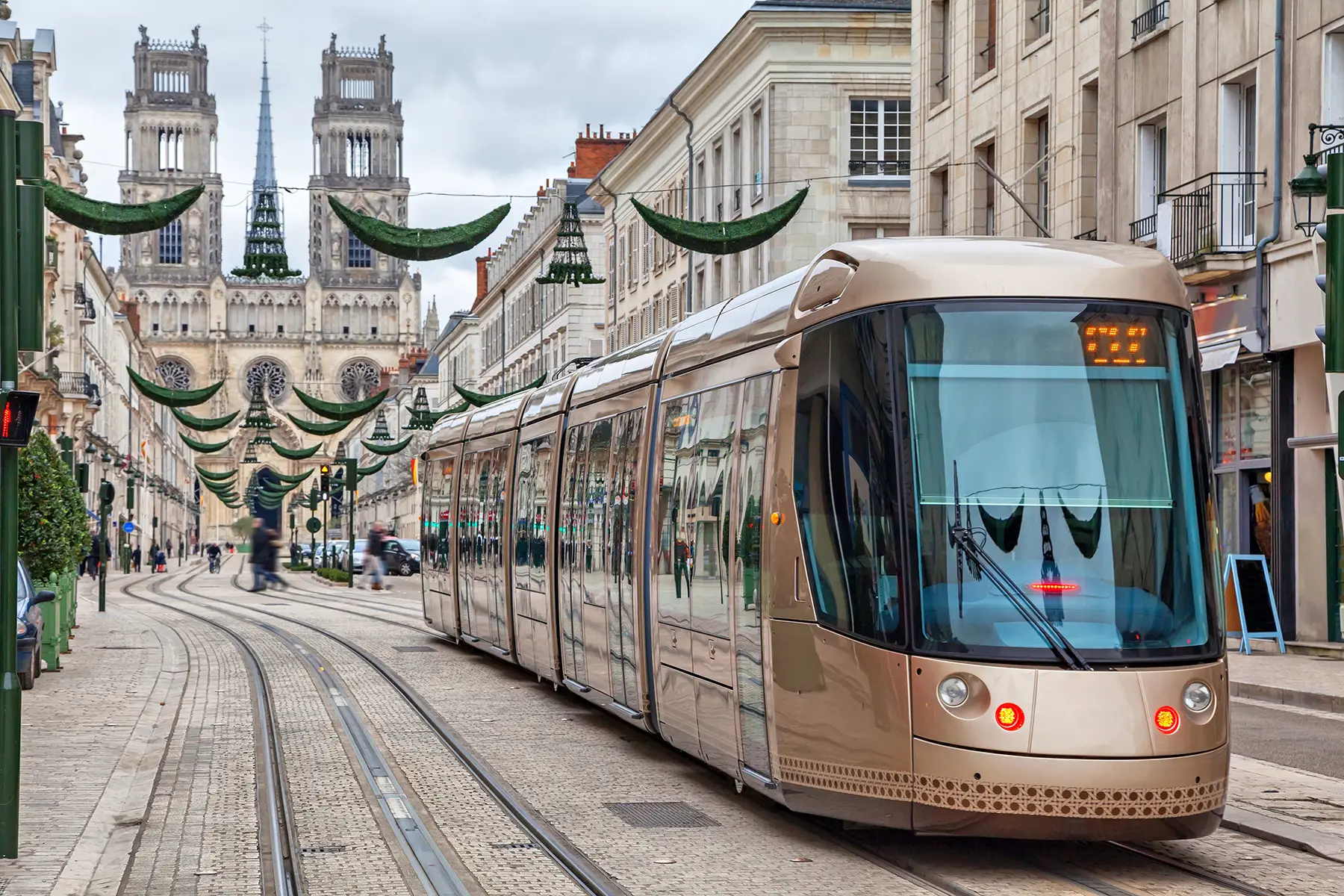
Since they are relatively new, French trams are quite clean, modern, and affordable. In many French cities, they also provide the quickest and most efficient transportation to central areas.
Tram tickets can typically be used in conjunction with other local transport options (most notably the bus and the metro) as part of single or multiple journey tickets. You can buy tickets in advance from a machine at the tram stop or your nearest train station. However, you cannot buy tickets aboard the tram.
Once on board, you must validate your ticket. Machines should be clearly visible inside the tram and are usually yellow. Do not fold your ticket, as machines will be unable to read it and validate your journey.
Airports in France
France has one of the most developed air travel infrastructures in Europe, with plenty of international and local airports operating flights every day.
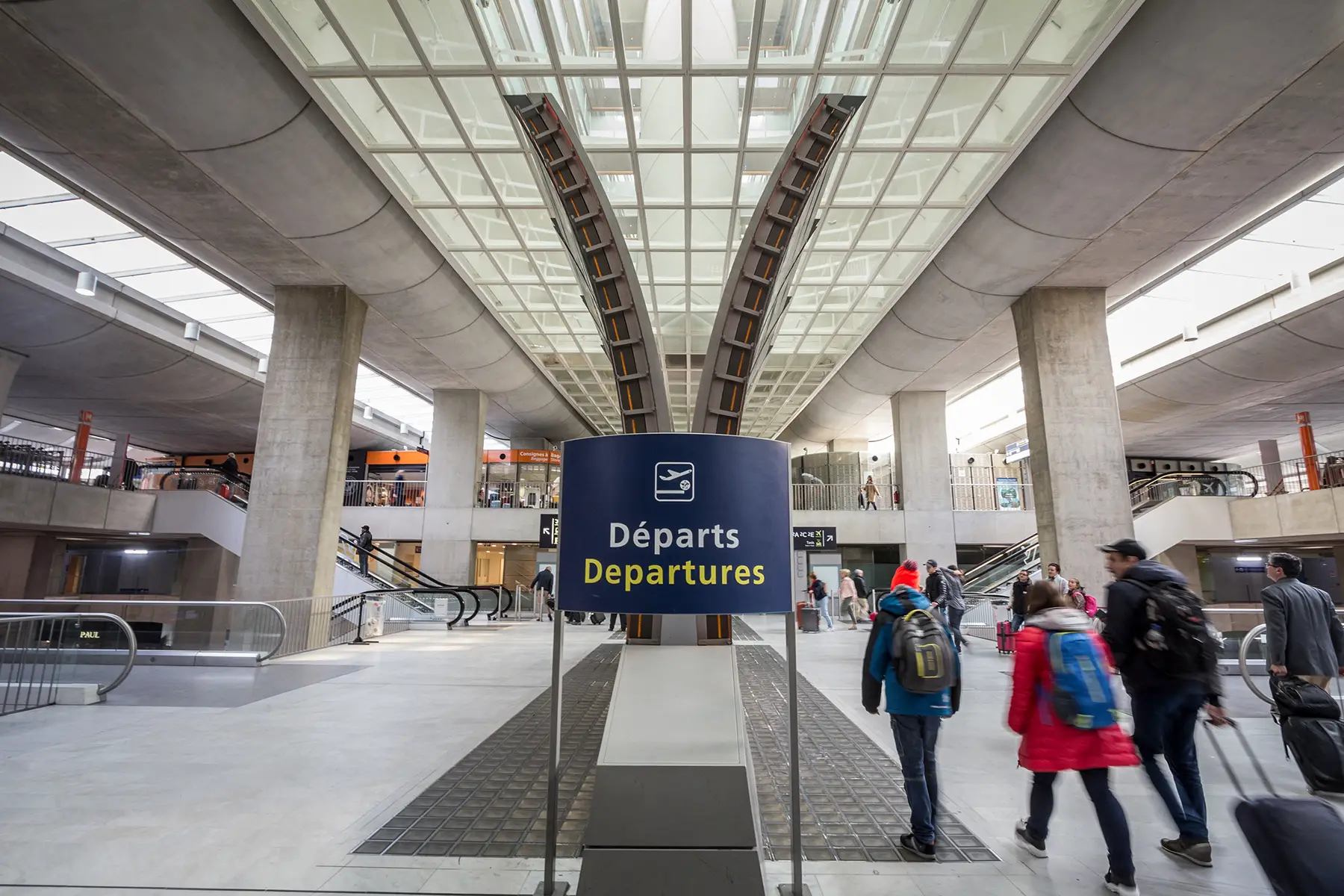
The two busiest French airports can be found in Paris: Charles de Gaulle and Orly. Among the airlines that both airports receive direct flights from are Air France, easyJet, Air Mauritius, and Virgin Airways.
The majority of France’s airports are smaller, regional hubs, such as Nice Côte d’Azur, Lyon-Saint Exupéry, and Toulouse-Blagnac. These offer only a handful of daily flights to both domestic and international destinations.
Larger French airports have a range of shops, restaurants, and sometimes a lounge with changing facilities. On the other hand, smaller provincial airports usually have at least a snack bar and tobacconist. Most airports have public transport connections – typically a bus or taxis – to take you to your desired location once you land.
Depending on your nationality, you may need a French visa to enter the country, even if you are simply changing flights at the airport.
Taking a French taxi
Whether you’re heading to the station with suitcases or you’ve missed the last metro home, sometimes a taxi is the best transport option. Luckily, France has plenty of taxis. These are licensed at a local level, with authorities imposing strict rules on roadworthiness, passenger capacity, and working hours. Private minicabs don’t exist and, generally speaking, all taxis operate similarly across the country.

In larger cities like Paris and Marseille, you can typically hail taxis in the street. Alternatively, you’ll find taxi ranks outside train stations and in busier business and entertainment districts. You can also get a taxi by calling a taxi company. This can be a good option if you’re in a quieter area, although you might need to understand at least basic French to speak with the operator.
Illegal taxis often wait around stations and airports, so always take a taxi from a designated rank or book one ahead of time so you know you’re getting a legal ride.
While most taxis will accept credit card payments, some do not. Therefore, it is best to check before you get in, or else carry some cash with you just in case.
Taxi apps
Ride-sharing apps also operate in many large cities in France. Among the most popular in France are:
- Uber: available in 13 French regions
- Bolt: available in 22 French cities, including Paris, Toulouse, and Marseille
- G7: available in over 180 French cities, taxis can be booked through their website, their app, or by calling them up
Prices for a taxi will differ depending on what style of taxi you travel in and the distance. Alongside convenience, these apps have the advantage of showing the passenger how much their ride will cost before setting foot in the taxi.
You can pay for your taxi by linking your debit/credit card to the app, or else paying by cash.
How disability-accessible is French public transportation?
Public transportation in France is fairly accessible for persons with disabilities, with some modes of transport being more accommodating than others.
For those with restricted mobility, the bus and the tram are the most accessible mode of transport. Most buses in France are equipped with lowered floors and electronic ramps, allowing you to easily roll on and off the bus if you have a wheelchair. Trams, on the other hand, stop at level with the platform, allowing wheelchair users to board unaided.

Unfortunately, the metro is challenging to navigate for those with restricted mobility, as most stations can only be accessed by stairs. The only Paris Métro route to date that is wheelchair accessible is the M14 line.
For those with hearing impairments, French metro and RER stations are in the process of installing sound beacons to locate entryways.
Provisions are available for persons with disabilities when riding public transportation in France. For buses, metro trains, and regional trains, check with your local transport operator to see what discounts are available in your region.
For train travel, persons with disability are entitled to special discounts and, in some cases, priority in queues. Companions may also be entitled to a travel discount.
How environmentally friendly is French public transportation?
France is taking great steps to prioritize the environment through its public transit system. Paris is a pioneer in reducing carbon emissions, with a recent investment in over 4,700 electric buses set to be driving around the capital by 2025 as part of the Bus2025 project. Its bicycle-sharing system Vélib’ Métropole also promotes a greener form of travel, whereby both mechanical and electrical bikes are available to transport Parisiennes from one spot to the next.
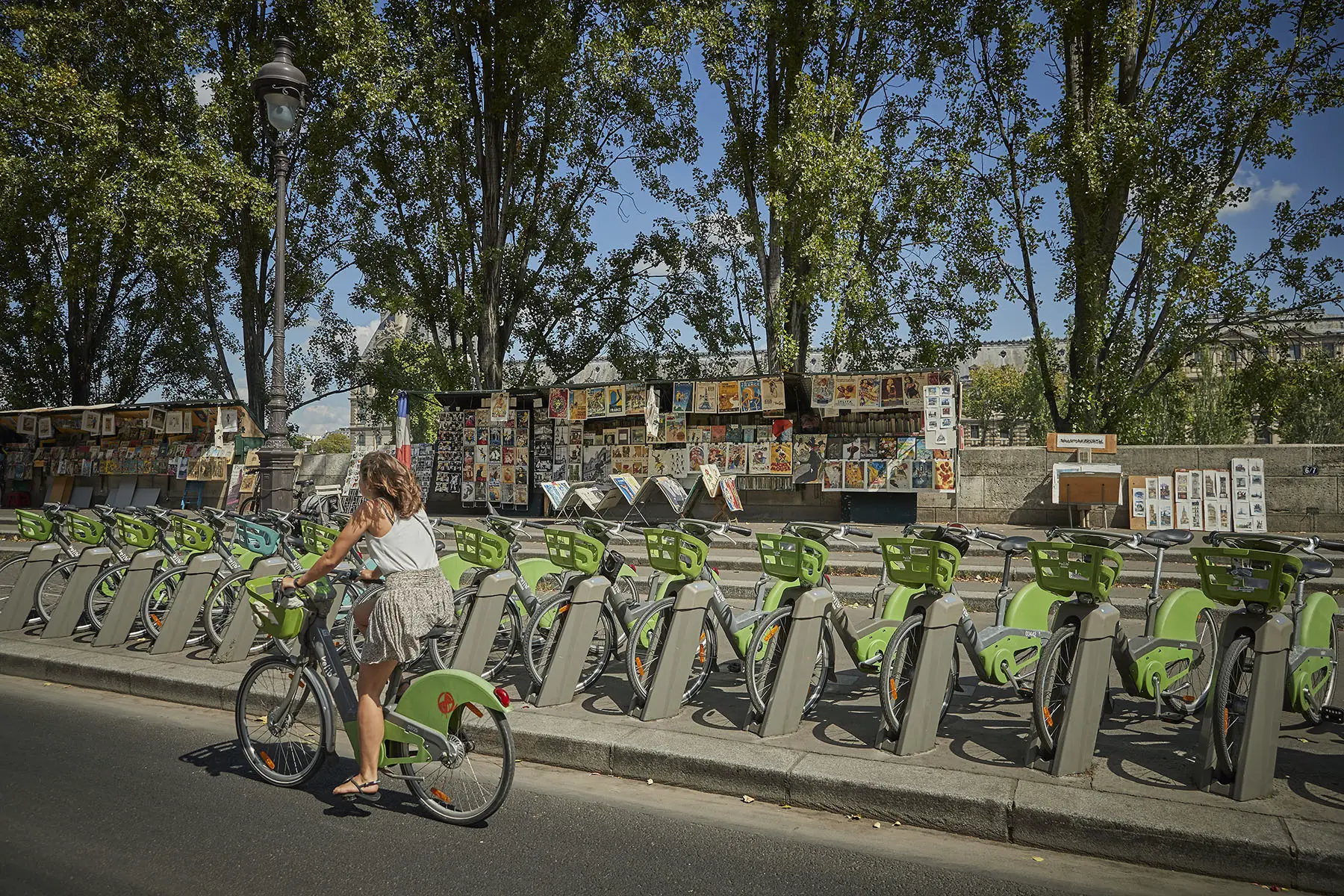
In other initiatives, as of March 2022 adverts for cars in France must encourage consumers to opt for less-polluting alternatives and make use of public transport when possible.
Making a public transportation complaint in France
If you have an unpleasant experience on French transportation or had your passenger rights violated, you are entitled to submit a public transport complaint.
You can submit your claim by either submitting an online form, calling customer service, or writing a letter. For contact details, check with your local transport operator.
Once you submit your complaint, you will receive a response between 48 hours to one week later.
Useful resources
- SNCF – French national train operator, for tickets and information
- RATP – Public transit operator for Paris and its surroundings
- Paris Aeroport – website of Paris Charles de Gaulle and Paris Orly airports
